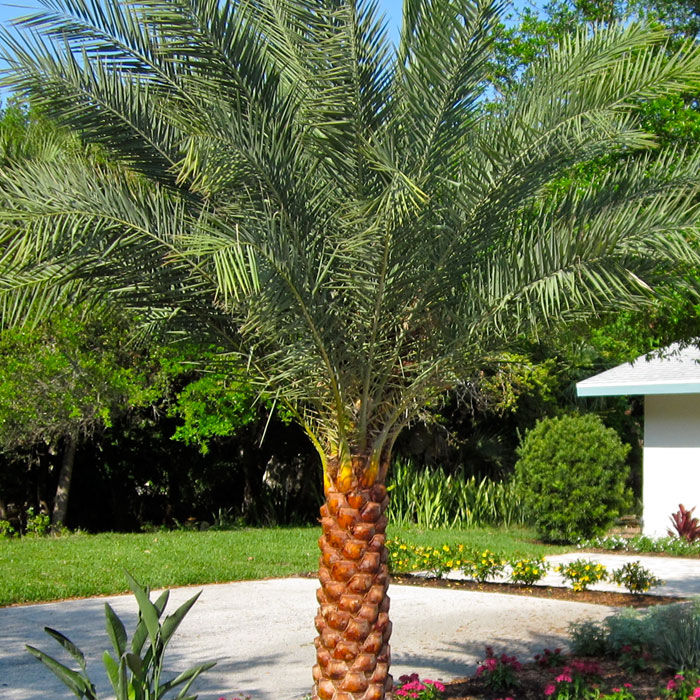Palms
Consider planting a palm or two this summer! Palms love the summer heat, and the tropical rains will help get them established. Pindos, Sylvesters, Queens, Sabals, European Fan Palms, Chinese Fan Palms and Robellinis are some of the great choices available.

Large Palms should be staked for 6-8 months. Stop by the Garden Center to see for yourself!
Crape Myrtles

Crape Myrtles are busting out in bloom all over the place! Monitor aphid problems on your trees. If your trees have buds that don’t open or leaves that are yellowing/browning and falling off- you may have aphids. Spray your tree in the late evening with a horticultural oil or Spinosad or consider using a systemic insecticide to help control.
Prune old blooms from crape myrtles (if you can reach!) and it may promote another bloom. Don’t allow too many seed heads to drop in your beds or they will create more weeds. Keep suckers trimmed to maintain the beauty of your tree.
Irrigation:
We are in the heart of the rainy season so now is a great time to save water! Put your irrigation on manual and operate it only when needed. Invest in a rain gauge (or a tin can will do)! If it does not rain during the week- up to one inch- then turn on your system to water. If you don’t have a Rain Sensor, get one installed and have your system checked periodically to ensure even coverage and no broken heads. Mature plants, palms, grass and shrubs only need ¾ of an inch to 1 inch of water per week. Overwatering causes big problems! Check your irrigation output to determine how much water your system puts out by putting some tin cans out and run the system through. Measure how much you put out every time you run the irrigation. Turn time up or back to make sure you only are putting down an inch per week. Remember, we are governed by the St. Johns Water Authority and are only permitted to water twice per week- Wednesday and Saturday for odd number homes and Thursday and Sunday for even. This includes people with wells.
Lawns
Watch for lawn pests during the summer months. Chinch bug damage in St Augustine grass occurs as straw-colored patches in the sunnier, hot parts of your lawn- in particular, near walkways and driveways. Apply products labeled for Chinch Bugs. Grass becomes yellow and brown but does not peel away from the ground. Try rotating products to prevent chinch bugs from building up a resistance to a single product. Some examples would be Hi-Yield Bug Blaster, Hi Yield Grub Free Zone III, and Bayer Complete.
Seeing Bevies of Moths Flying in Your Landscape?
The moths you are seeing will not cause damage; however, they are depositing eggs which will result in the offspring, the caterpillars, chewing on the turf- Tropical Sod Webworms. Some of the telltale signs are areas of your grass that look lower- like someone took a weed-eater to it. Lighter yellow color patches in your grass, that can be easily peeled away from the rest of the lawn. Turf can recover from tropical sod worm damage if properly irrigated and kept healthy. Drought or low mowing heights may prolong or prevent recovery. Chemical control should be directed at the feeding larvae and not the flying moths. Spot treat the areas where infestations are detected. Insecticide is best applied in the early evening when the larvae feed and apply two weeks after you see peak moth activity. Use Bayer Advanced Complete Insect Killer or Spinosad–as two possibilities. As always if you have questions- stop in for advice.If sedge grass or dollar weed are a problem, check your irrigation or soil. These weeds are generally associated with high soil moisture and high PH for sedge. If there are too many to pull, try Image for most of the sedges and Dollar Weed Control for dollar weed. Spot treat heavily as needed.